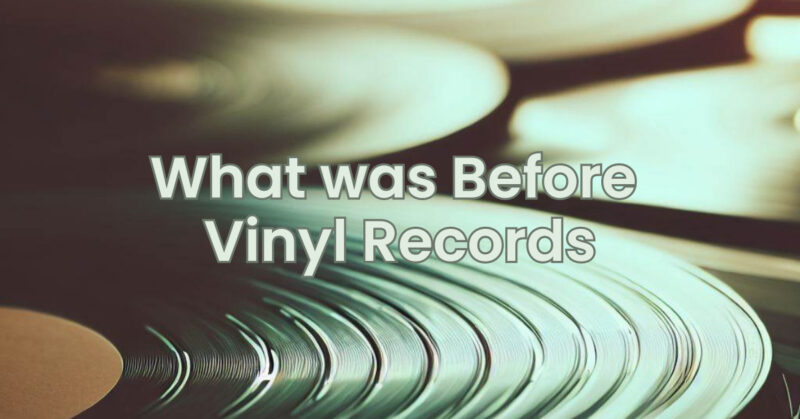Vinyl records have become synonymous with music nostalgia and audio playback, but their emergence was preceded by several fascinating developments in the quest to capture and reproduce sound. In this article, we embark on a journey through the early days of audio playback, exploring the predecessors to vinyl records and their role in shaping the way we experience music.
Phonograph Cylinders: The phonograph cylinder, invented by Thomas Edison in 1877, predates vinyl records as one of the earliest commercially viable audio recording formats. These cylindrical devices were made of materials such as wax, celluloid, or a combination of materials. Sound was recorded by inscribing grooves onto the surface of the cylinder with a stylus. During playback, the stylus would trace the grooves, reproducing the recorded sound. Phonograph cylinders were initially hand-cranked and played on phonograph machines equipped with a horn for amplification.
Shellac Records: Before vinyl records came into prominence, shellac records were a popular format for audio playback. Shellac records emerged in the early 20th century and were made from a mixture of shellac resin, a binder, and finely ground mineral fillers. These records were known for their durability and were commonly used until the mid-20th century. Shellac records were played on turntables equipped with a mechanical tonearm and a needle that tracked the grooves on the record surface. However, shellac records were relatively fragile and prone to breakage, limiting their lifespan and usability.
Acetate Records: In the transition from shellac to vinyl, acetate records played a significant role. Acetate, a type of plastic material, provided an alternative to the fragility of shellac records. Acetate records were created by coating a metal or glass master disc with a layer of lacquer or acetate material. Sound would then be etched onto this coating, creating the grooves necessary for playback. Acetate records were often used for recording and testing purposes due to their relative ease of production and durability, but they were not intended for long-term commercial use.
Vinyl Records: The advent of vinyl records revolutionized audio playback and became the dominant format for music distribution from the mid-20th century onward. Vinyl records, made primarily from polyvinyl chloride (PVC), offered several advantages over their predecessors. They provided improved sound quality, longer playing times, and greater durability. Vinyl records were mass-produced using a process called vinyl pressing, where vinyl pellets were melted and molded into the desired shape, including the distinctive grooves that stored the audio information. The adoption of vinyl records ushered in a new era of audio enjoyment and music appreciation.
Before the rise of vinyl records, audio playback underwent several transformative stages. From the phonograph cylinder to shellac records and acetate discs, each format contributed to the evolution of sound reproduction. However, it was the introduction of vinyl records that truly revolutionized the way we experienced music. Vinyl’s superior sound quality, extended playing times, and durability captured the hearts of music lovers worldwide. While newer digital formats have emerged in recent years, the allure of vinyl records persists, offering a nostalgic and immersive listening experience that pays homage to the rich history of audio playback.


